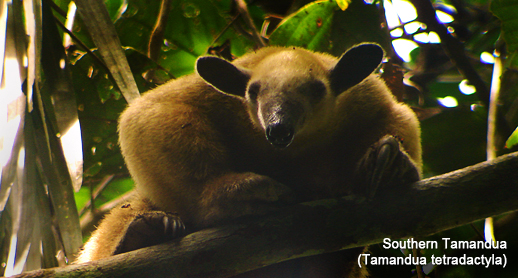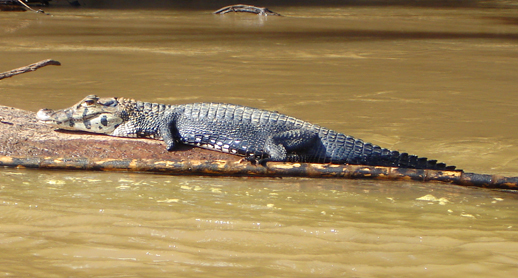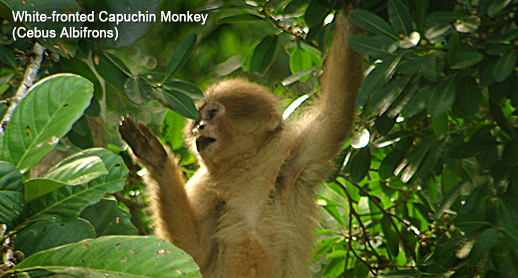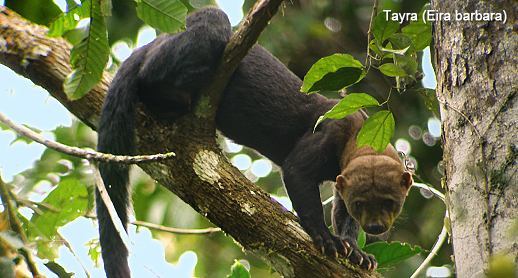AMAZON BIRDING – THE ULTIMATE IN WILDLIFE TOURS IN MANU
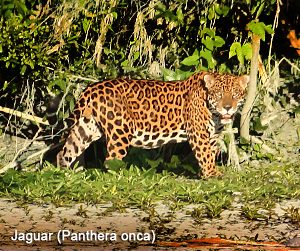 Manu National Park has the highest biodiversity of any protected area in the world. The unparalleled beauty of this trip is in the landscape and variety of habitats ranging from orchid-draped cloud forest where Spectacled Bears and Cock-of-the-Rocks still exist unbothered, to pristine Amazon rainforest with 13 primate species and oxbow lakes frequented by Giant Otters. A trip to Manu is a trip to one of the world´s great wilderness areas where wildlife is still plentiful and over 1000 species of birds have been recorded. Add to this a breathtaking visit to Machu Picchu and you have a trip of a lifetime.
Manu National Park has the highest biodiversity of any protected area in the world. The unparalleled beauty of this trip is in the landscape and variety of habitats ranging from orchid-draped cloud forest where Spectacled Bears and Cock-of-the-Rocks still exist unbothered, to pristine Amazon rainforest with 13 primate species and oxbow lakes frequented by Giant Otters. A trip to Manu is a trip to one of the world´s great wilderness areas where wildlife is still plentiful and over 1000 species of birds have been recorded. Add to this a breathtaking visit to Machu Picchu and you have a trip of a lifetime.
EXPLORE MANU NATIONAL PARK: Cloud forest, Oxbow Lakes, Tapir & Macaw Clay Licks.
Day 0: Lima-Cusco (3360m)
Depending on arrival time in Lima we either transfer to our hotel in Lima or connect to Cusco.
Day 1: Cusco to Paradise Lodge (Lower Manu cloud forest 1400m).
Today we will leave early, first driving through scenic intermontane valleys. We will make selected stops for the Lupacas Pre-Inca cemetery and Paucartambo village. Reaching a high mountain pass at Ajanaco, we will begin our journey into a vast intact wilderness area as we descend along the sinuous road that will take us to the Manu foothills. Along the extraordinary altitudinal transect that this remarkable road represents, new wildlife species continually appear whilst others drop out. Initially, the steep Andean slopes are clad in stunted forest, temperate shrubbery and wet paramo, and here we may well encounter such high-elevation species as Mountain Caracara, Shining Sunbeam and Moustached Flower-piercers. A little lower down, where the magnificent cloudforests begin, we shall look out for the beautiful Orchids and the famous Andean cock-of-the-Rock at the Lek, proclaimed as Peru´s national bird. With a little luck we will see a Woolly Monkey and Brown capuchin Monkeys. We will stay for one night at the Paradise Lodge. Optional night walk in Lower Manu-cloudforest. L:D.
Days 2: Paradise Lodge to Hummingbird Lodge
After a final morning in the cloudforest we will descend further down the Manu road to Atalaya port. From here we shall continue our river journey, dawn the Alto Madre de Dios River, leaving behind the green ridges of the foothills as we delve deeper into the humid lowlands. Here in the strict confines of Manu Biosphere, Black Skimmers, Sand-coloured Nighthawks and the bizarre Orinoco Goose on the sandbars. Careful scanning of the river edge may reveal the awkward shape of a Great Black-Hawk, or the reddish brown of a Capybara, the world´s largest rodent. With just a little luck on our side we should also be able to spot the stately Razor-billed Curassow, a species driven to near-extinction in large parts of Amazonia but still reasonably common here. Raucous Blue-and yellow, Scarlet and Red-and-green Macaws float overhead, clothed in a riot of colours. Eventually we will arrive at the comfortable Hummingbird Lodge for one night stay, with optional night walk. B:L:D.
Days 3: Hummingbird Lodge to Matsiguenka camping Lodge
Today we shall continue our river journey. Eventually we will reach the clay-laden waters of the meandering Manu River and head upstream. Here in the strict confines of Manu National Park, Black spider Monkeys, Bolivian squirrel Monkeys and the bizarre Orinoco Goose nest on the sandbars, whilst Black Caiman and White Caimans lazily sun themselves nearby. Careful scanning of the river edge may reveal the awkward shape of a Great Black-Hawk, the flash of a Sunbittern or the reddish brown of a Capybara, the world´s largest rodent. With just a little luck on our side we should also be able to spot the stately Jaguar (Panthera onca), a species driven to near-extinction in large parts of Amazonia but still reasonably common here. Raucous Blue-and yellow, Scarlet and Red-and-green Macaws float overhead, clothed in a riot of colours. Today before to arrive to our camping lodge we will explore the trails and the small tower good place to enjoy the scenery at Otorongo Oxbow Lake. Late in the afternoon we will arrive to the comfortable Matsiguenka Camping Lodge for a two nights stay, with optional night walks. Here we will meet the Matsiguenka natives B:L:D.
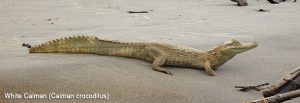
Days 4: Exploring Salvador Oxbow Lake
We strart with a Red Howler Monkey (Alouatta sara) announcing the new day with its loud song. During the first hours of the day many shy understorey denizens proclaim their territorial rights with their characteristic songs. Located in the vast virgin rainforest of Manu National Park, the Matsiguenka Camping Lodge gives access to several distinct habitats including the nearby Salvador oxbow lake. Here a small catamaran allows us to float gently by the lake edge and marvel at its sensational bird and animal life. We even have a very good chance of encountering a friendly family group of the endangered Giant Otter (Pteronura brasiliensis) actively fishing in their aquatic environment, Clumsy Hoatzins clamber about in giant arum plants and Black-capped Donacobiuses perform their loud duets, whilst overhead Blue-headed, Yellow-crowned and Mealy Parrots squawk their way to or from their roosts. Entering the primeval Amazonian forest is a strange and captivating experience. Lianas hang in loops and tangles from the canopy, through which the biggest trees emerge to stand in full sunlight. We shall rise early each morning as most forest inhabitants are at their peak of activity from around dawn to about midday. Mammals too roam the forest and Manu National Park is probably the best place to see a large variety of New World primates. As many as thirteen species of monkey share the canopy and regularly seen species include the Bolivian Squirrel Monkeys, the curious Brown and White-fronted Capuchin Monkeys, the acrobatic Black Spider Monkey, the little Saddle-back Tamarin and the lethargic Red Howler. These forests are the most accessible in all of Amazonia for the incomparable Emperor Tamarin. Night at Matsiguenka Camping Lodge, optional night walk. B:L:D.
Days 5: Matsiguenka camping Lodge to Manu Birding Lodge
After some final in Manu National Park we will travel back down the Manu River to its junction with the Alto Madre de Dios River. Here the water changes from quiet and tea brown to clear and fast-flowing. After travelling down the Madre de Dios River we will come to Manu Birding Lodge, with a bird list over 600 species, situated just upriver from the Blanquillo Macaw Clay Lick. The rest of our time will be spent exploring the extensive trail systems which have been designed to visit different forest types. There will be an optional visit to the large mammal clay lick here, which can attract Tapirs, Peccaries and maybe even a Jaguar, also attracts Guans, Curasows, Chachalacas as well as Rose-fronted and Rock Parakeets and Dusky-billed Parrotlet. Manu Birding Lodge our base for the next three nights, with optional night walks. B:L:D.
Days 6: Macaw Clay Lick & Tapir Clay Lick
We start early morning, 40 minutes downriver to the most spectacurar and the bigest Macaw Clay lick, this one featuring up to 100 Red-and-green Macaws and observe the spectacle of hundreds of Parrots and Parakeets very close from our blinds. Red-and-green Macaw is a highlight. Here we will see the beautiful Orange-cheeked Parrrot, Blue-headed Parrot as well as Mealy and Yellow-crowned Parrots. Smaller visitors include White-eyed, Cobalt-winged and Tui Parakeets. We´ll use a blind (hide) to get close to the birds. Breakfast at the blind. The noise alone is incredible and the sight of these brightly colored birds at the lick is a sight not to be forgotten. This afternoon we will walk about 50 minutes through the forest is a large mammal clay lick where Tapirs (Tapirus terrestris), the largest South American land mammal, regularly come for minerals. At night Red-brocket Deer, Bicolor-spined Porcupine, Paca and other animals share this necessary ingredient to the digestive system. There is a large, raised blind here equipped with mattresses and mosquito nets for those who want to spend the night in comfort observing these nocturnal creatures. During the day several species of Rose-fronted and Rock Parakeets and Dusky-billed Parrotlet as well as Spix´s and Blue-throated Pinping Guans, Ruddy and Plumbeous Pigeons, Pale-winged Trumpeter, Razor-billed Curassow and White-lipped and Collared Pecaries, Southern Amazon Red Squirrel, Amazon Dwarf Squirrel, Brown Agouti, Red Howler and Black Spider Monkeys regularly visit the clay lick. Night at Manu Birding Lodge. B:L:D.
Days 7 and 8: Exploring Manu Birding Lodge
The call of the Red Howler Monkeys will wake us up for the delicious breakfast, then we will be exploring the extensive trail systems which have been designed to visit different forest types. The area around this lodge has the most forest types of anywhere in the Manu area, and thus the highest bio-diversity – which means the most species of flora and fauna. With the extensive Varzea, virgin raiforest and Mature Transitional Floodplain Forest, this means a mind-boggling variety of wildlife. We expect this lodge area to hold more species of birds than anywhere else in the world and the bird list is already 567 species. We may see Emperor and Saddleback Tamarins, Monk Saki Monkey, Black Spider Monkey, Brown and White-fronted Capuchin Monkeys, Bolivian Squirrel monkey, Dusky Titi Monkey and for the optional night walks the Night Monkey or visit the Tapir clay lick. Nights at Manu Birding Lodge.B:L:D
Days 9: Manu Birding Lodge to Cusco
Starting early this morning on our comfortable boat we will have one last look at the numerous parrot flocks for which Manu is famous. The first part of our journey down the Madre de Dios River will give us another opportunity to see riverside wildlife activity. Leaving our boat, we will take a local car from Boca Colorado to pto Carlos and we will cross the Inanvari River with a local boat, then we´ll drive back to Cusco, transfer to your Hotel and your tour Manu National Park ends. B:L.
Days 10: Machu Picchu or flight home
TOUR INFORMATION
PRICE: $3590 per person. (min. 2 passengers) based in double occupancy.
INCLUDED:
- All Meals, snacks, drinking water (vegetarian on request). B:L:D.
- All lodging with private bathroom & Hot and cold shower.
- Private transportation ( bus / van & boat)
- Professional expert bilingual Natural History Guide with a spotting scope.
- Hotel transfer and entrance fees.
- First Aid Kit with a poison extractor.
- Flora and fauna check list
NOT INCLUDED: Personal expenses
TRIP CONSIDERATIONS
CLIMATE: Hot and humid in the lowlands to very cold at the Andes. This is a dry season tour, but there is the possibilty of a «Friaje», a strong cold front moving up from the south that can bring periods of unusually cool weather and rain.
DIFFICULTY: Easy to Moderate. There are some long journeys and early starts, but the walking is usually fairly easy.
ACCOMMODATION: The jungle lodges are comfortable but simple; some do not have full-time electricity, but provide a generator for a few hours a day to charge batteries.Matsiguenka Camping Lodge in the Reserved Zone of Manu National Park has shared bathroom facilities and cold shower. Paradise Lodge and Manu Birding Lodge consists in double rooms with a private toilet and shower facilities. Hot and cold water is always available and all toilets facilities are flush.
Wildlife Photography: Opportunities are worthwhile.
What to Bring
We advise you to bring:
- Besides from Binoculars and photo-equipment (the important Wildlife Enthusiast stuff) we advise:
- Flashlight for night walk
- Light day pack
- A bottle or canteen to carry water on outings
- Sunscreen and insect repellent
- T-shirts and a long-sleeved shirt
- Jeans or other cotton pants are comfortable, as well as quick-drying nylon ones
- Cotton socks
- Light jacket, water resistant, or poncho
- Hiking boots or sturdy shoes
- Sandals for after hours
- Hat that will not come off in windy boat rides and sunglasses
- Plastic bags for camera, clothes, etc
- Personal toiletries (shampoo, towel, etc)
NOTE: In rainy season we provide umbrella and rubber boots in many popular sizes for rainy days.
Amazon Birding look forward to welcoming and guiding you soon!
Last minute bookings will be accepted but you must be aware that there is the possibility that we will not get space at the lodge or tour that you need.
PLEASE CONTACT US IF YOU HAVE ANY QUESTIONS OR CONCERNS.
AMAZON BIRDING: Conservation through ecotourism.
PHOTOS GALLERY – EXPLORE MANU NATIONAL PARK 9 DAYS

